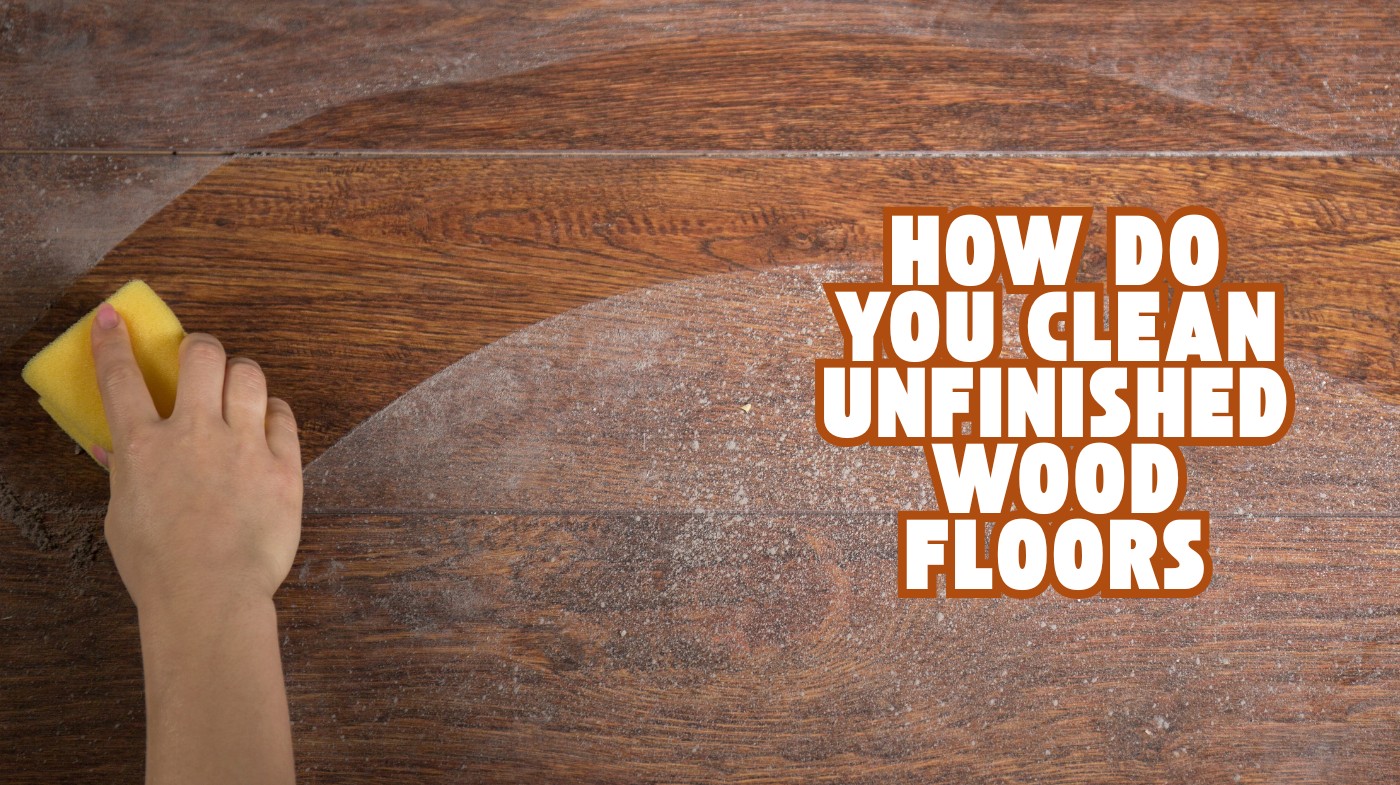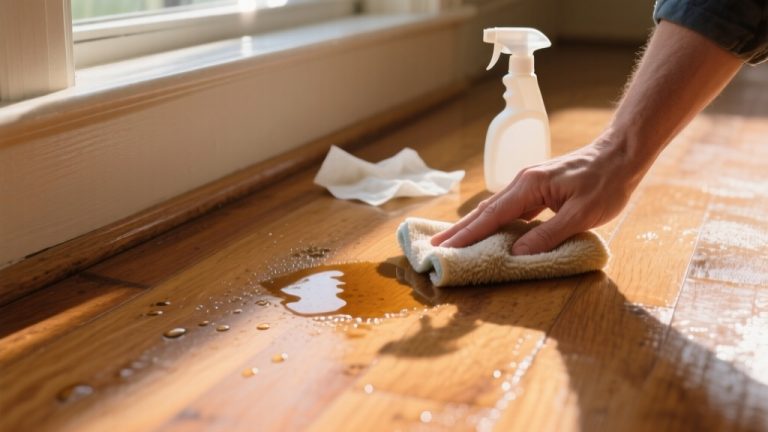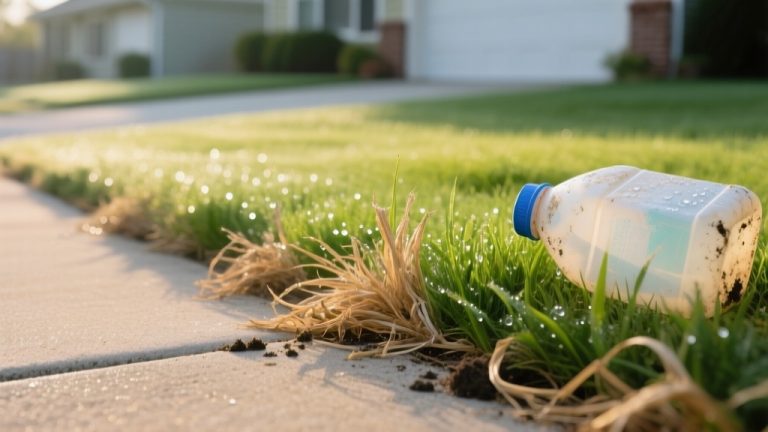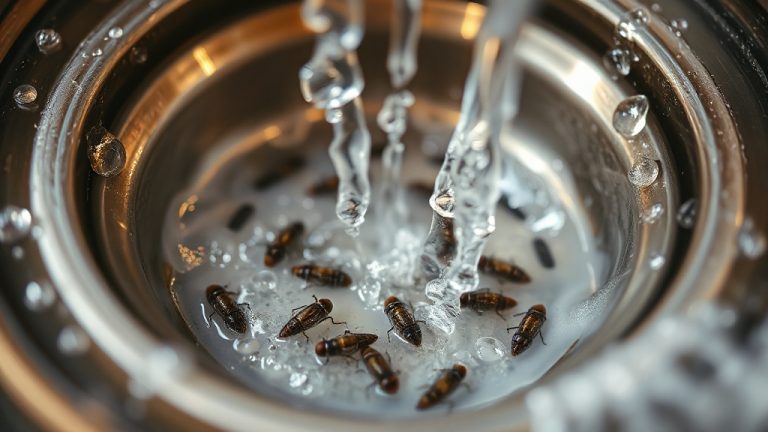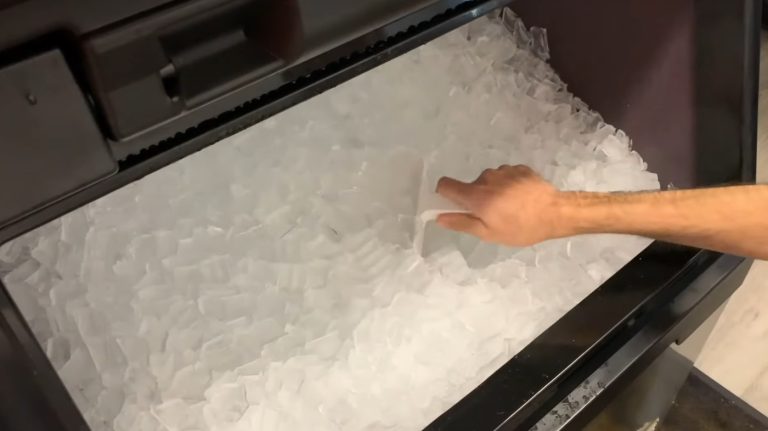How Do You Clean Unfinished Wood Floors? Easy Safe Methods
You clean unfinished wood floors by first sweeping or vacuuming gently with soft attachments to remove dirt without scratching.
Use a barely damp microfiber mop with a mild, plant-based cleaner or diluted vinegar solution, applying minimal moisture to prevent damage.
Wipe spills immediately and dry thoroughly. Avoid harsh chemicals and soaking the wood. Maintaining proper moisture control is key to preserving your floor’s integrity.
To master detailed stain removal and protective steps, there’s more to explore.
Key Takeaways
- Use a microfiber dust mop or soft-bristle broom to remove dirt, avoiding excessive moisture to prevent water damage.
- Clean spills immediately with a barely damp cloth and dry promptly to protect the wood.
- Apply mild cleaning solutions sparingly, such as diluted vinegar or plant-based soap, testing first on a hidden area.
- Avoid harsh chemicals and acidic cleaners; opt for gentle sanding and natural stain removers for tough spots.
- Maintain stable humidity and temperature, ensuring thorough drying and ventilation to preserve floor integrity.
Essential Tools and Materials for Cleaning
When cleaning unfinished wood floors, choosing the right tools and materials is essential to avoid damage and maintain the wood’s integrity.
Use a microfiber mop with a well-wrung head to control moisture and prevent water from penetrating the wood grain.
Avoid steam mops, which risk warping the wood due to heat and moisture. Always wring the mop well to avoid excess water, as unfinished floors are sensitive to moisture and can easily be damaged by over-wetting moisture sensitivity.
It is also important to ensure proper ventilation when cleaning to prevent any buildup of fumes or moisture.
For dust removal, opt for a vacuum with a soft-brush attachment, microfiber dust mops, or brooms with soft bristles to prevent scratching.
Select lint-free microfiber cloths or soft cotton rags for wiping, ensuring they’re dry or only slightly damp. Avoid abrasive materials that can damage wood fibers. Regular maintenance and cleaning help reduce the risk of hazards related to accumulated debris.
For cleaning solutions, mild dish soap or plant-based soaps are safest, while harsh chemicals and excessive vinegar use should be avoided unless compatibility with your wood type is confirmed.
Preparing the Cleaning Solution
How do you create an effective cleaning solution for unfinished wood floors? Start by mixing ½ cup of vinegar with one gallon of warm water to cut through grime without harsh chemicals.
Test this solution on an inconspicuous area to ensure it doesn’t dull the wood. Regular cleaning with mild solutions also prevents buildup and helps maintain the wood’s natural appearance.
For improved scent and mild antibacterial benefits, add a few drops of essential oils like lavender or lemon—avoid overpowering fragrances.
Alternatively, combine one part plant-based liquid soap, one part vinegar, and ten parts water for enhanced cleaning power, but keep detergent concentration low to prevent residue buildup.
For gentle cleaning with light polishing, mix 2 tablespoons olive oil, 1 tablespoon vinegar, and 2 cups warm water. Always use warm water and avoid excess moisture to protect the wood’s integrity during cleaning.
It is important to use cleaning solution sparingly, applying it only to stains when necessary to maintain the floor’s condition.
Step-by-Step Cleaning Process
After preparing your cleaning solution, start by removing loose dirt and grit to protect the wood surface. Use a microfiber dust mop or soft-bristle broom, sweeping along the wood grain to capture debris effectively.
Avoid upright vacuums unless they’ve a hardwood setting, and limit vacuuming to once a week. This helps to prevent scratch damage caused by abrasive tools or vacuum beater bars.
Ensuring proper airflow conditions during cleaning can also reduce moisture buildup and protect the wood.
For minor spills, promptly wipe with a barely damp cloth and dry immediately, never allowing moisture to linger. Use a pH-neutral cleaner for sticky residues, testing it first in a hidden area.
When damp mopping, use a flat mop with a slightly damp terry cloth cover, working in small sections along the grain. Rinse the mop frequently and avoid steam mops or excess moisture to prevent warping.
Techniques for Stain Removal
When tackling stains on unfinished wood floors, start with gentle sanding using fine-grit sandpaper to avoid damaging the surface while lifting the stain.
Pair this with natural remedies like baking soda and vinegar mixtures to break down and neutralize stains effectively. These methods help you address stains safely without harsh chemicals and minimize the risk of surface corrosion.
It is important to avoid excessive moisture during cleaning, as unsealed wood floors are prone to damage from water and wet mops.
Gentle Sanding Methods
Although removing stains from unfinished wood floors often requires robust methods, gentle sanding techniques play an essential role in preserving wood integrity while effectively refining the surface.
After coarse sanding with 36-60 grit to strip old stains, switch to medium grit (80-100) for light, consistent passes that smooth rough patches without over-sanding.
Finish sanding with fine grit (120-150) creates an even texture ideal for stain absorption, using light, overlapping strokes and focusing on edges and corners.
This process ensures finish adherence and helps prevent flaking or peeling over time. Understanding the importance of surface preparation can significantly improve stain durability and appearance.
Hand sanding complements machine work in tight areas, progressing from coarse to fine grits carefully to avoid gouging. Always maintain steady pressure and replace sandpaper frequently.
After sanding, thoroughly vacuum and damp mop to remove dust, ensuring a clean surface for uniform stain application and a professional finish.
Natural Stain Remedies
Refining unfinished wood floors through gentle sanding sets the stage for effective stain removal. Start by vacuuming or sweeping the surface to eliminate loose debris. Acting quickly after noticing a spill is crucial because acting fast prevents the stain from soaking deeper into the wood grain.
For general cleaning, mix one cup of white vinegar with one gallon of warm water; apply with a well-wrung mop to avoid saturation, then dry promptly. Using eco-friendly cleaning solutions helps maintain the wood’s natural finish while reducing environmental impact.
Address urine or liquid stains with a solution of equal parts water and vinegar plus a few drops of dish soap, applying gently with circular motions using a soft cloth. Identifying the type of stain first can help you select the right treatment method for better results.
For stubborn stains, create a baking soda and vinegar paste, apply briefly, then rub gently before rinsing and drying. Oil stains respond well to mineral spirits applied carefully on a cloth, avoiding excess moisture. Use protective gloves and ventilate when handling solvents to ensure safety.
Proper Drying and Moisture Control
Since unfinished wood floors are highly sensitive to moisture levels, you must control drying carefully to prevent cracking, warping, or mold growth.
Begin by promptly removing surface water with towels, mops, or wet vacuums, repeating until no visible moisture remains. It is important to clear the area by removing all furniture and rugs from the affected zone to promote effective drying.
Unfinished wood floors require careful drying to avoid damage—start by removing all surface moisture promptly.
Use non-sudsing disinfectants to clean without residue. Employ drying mats or containment barriers to enhance moisture extraction and control the environment’s temperature and humidity.
Regular maintenance and monitoring can help protect against moisture-related damage similar to how sealing protects marble surfaces.
Monitor moisture internally with penetrating meters and assess relative humidity via thermal hygrometers to maintain stable conditions. Avoid rapid, uneven drying that causes crowning.
Ensure uniform airflow and clear the area of furniture to prevent moisture trapping. Use dehumidifiers to reduce ambient humidity efficiently.
Regularly check progress with moisture meters and infrared cameras to avoid over- or under-drying, preserving the wood’s dimensional stability and long-term integrity.
Applying Protective Finishes
After guaranteeing your unfinished wood floors are properly dried and moisture levels are controlled, the next step is to apply a protective finish.
Choose a finish based on durability, appearance, and maintenance needs. Water-based polyurethane is a popular choice as it dries quickly and enhances the natural color and grain of wood with high durability.
Here’s how to proceed:
- Select Finish Type: Polyurethane for durability, penetrating oil for natural look, acid-cured for exotic woods, or hard wax oil for VOC-free protection.
- Prepare Surface: Sand thoroughly and clean dust to ensure adhesion.
- Apply Coats: Use 2-3 coats, allowing proper drying time between each—oil-based polyurethane needs 3-4 hours, polycrylic 1-2 hours.
- Ensure Ventilation: Work in a well-ventilated space, especially with strong-odor finishes like acid-cured, and wear protective gear.
Routine Maintenance and Care Tips
While unfinished wood floors offer natural beauty and durability, maintaining their condition requires consistent, careful attention.
Sweep daily with a microfiber dust mop or soft-bristle broom along the grain to remove dust and grit, preventing surface abrasion. Avoid upright vacuums unless hardwood-safe.
Using a microfiber broom for dust removal helps ensure thorough cleaning without scratching the surface. It is important to dry immediately after any damp cleaning to prevent moisture damage.
For spills, use a barely damp microfiber cloth and dry immediately to prevent moisture damage. Avoid soaking or wet mopping; if mopping, use a well-wrung microfiber mop with a mild solution.
Never use acidic or harsh cleaners like vinegar, ammonia, or oil soaps, which damage wood fibers.
For stains, gently brush with a hard-bristled brush and sand lightly sparingly with fine grit sandpaper. Always sweep after sanding and ensure the floor is dry before further care.
Frequently Asked Questions
Can Unfinished Wood Floors Be Cleaned With Steam Mops Safely?
You shouldn’t use steam mops on unfinished wood floors because they expose the wood to high heat and moisture, which can cause swelling, warping, and long-term damage.
Without a protective seal, steam penetrates the wood, leading to grain raising and splitting. Instead, rely on dry mopping or slightly damp cloths with specialized wood cleaners.
This approach preserves the wood’s integrity and prevents costly repairs or voiding warranties.
How Often Should Unfinished Wood Floors Be Professionally Refinished?
You should have your unfinished wood floors professionally refinished based on traffic and wear. High-traffic areas typically need refinishing every 7–10 years, while low-traffic zones may last 10–15 years.
If wear is moderate, expect a 3–5 year interval, and heavy use can require refinishing every 1–3 years. Always inspect for scratches, dullness, or damage, and consult a pro to assess wood thickness and integrity before refinishing.
What Is the Best Way to Remove Pet Stains From Unfinished Wood?
To remove pet stains from unfinished wood, immediately blot urine with a clean cloth to prevent absorption. Use a diluted white vinegar solution to neutralize odor and gently scrub fresh stains with dish soap and water.
For dark stains, apply hydrogen peroxide lightly without soaking. Light sanding along the grain can eliminate surface discoloration.
Always dry thoroughly to avoid warping and test treatments on hidden spots first to protect the wood’s integrity.
Are There Specific Cleaning Products to Avoid on Unfinished Wood Floors?
You absolutely must never use bleach, ammonia, or abrasive chemical cleaners on unfinished wood floors—they’ll wreck the wood’s natural oils and color like nothing else.
Avoid Murphy’s Oil Soap and baking soda-vinegar combos, too; they can dry out or darken your floor, forcing sanding.
Stick to gentle, wood-specific products only. Using harsh cleaners isn’t just a mistake; it’s a guaranteed way to permanently damage your unfinished wood’s delicate surface.
How Do Temperature and Humidity Affect Unfinished Wood Floor Maintenance?
You need to control temperature and humidity carefully to maintain unfinished wood floors. High heat causes expansion and softening, increasing dents and cracks, while cold contracts wood, risking splits.
Humidity swings lead to cupping, gaps, and warping, so keep indoor humidity between 35%-55%. Use humidifiers or dehumidifiers seasonally to stabilize moisture.
Sudden changes stress wood fibers, so maintain consistent climate conditions to prevent structural damage and prolong floor integrity.
Preserve the Beauty: Gentle Care for Lasting Wood Floors
Cleaning unfinished wood floors is like tending a delicate garden—you need the right tools and gentle care to let its natural beauty thrive.
By preparing your solution carefully and following each step precisely, you protect the wood’s integrity while removing impurities.
Controlling moisture and applying finishes act as a sturdy fence, guarding against damage. With routine maintenance, you’ll keep your floor resilient and vibrant, ensuring it stands the test of time with practical, consistent care.

